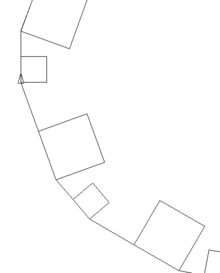
Fortran is a third generation, compiled, imperative programming language that is especially suited to numeric computation and scientific computing.
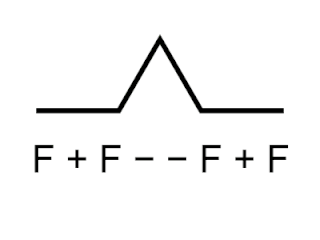
Logo is an educational programming language, designed in 1967 by Wally Feurzeig, Seymour Papert, and Cynthia Solomon. Logo is not an acronym: the name was coined by Feurzeig while he was at Bolt, Beranek and Newman, and derives from the Greek logos, meaning 'word' or 'thought'.
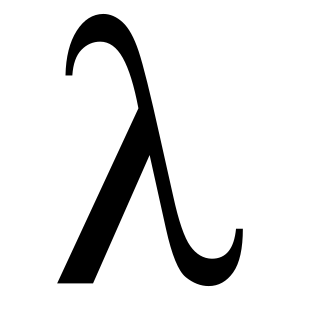
Scheme is a dialect of the Lisp family of programming languages. Scheme was created during the 1970s at the MIT Computer Science and Artificial Intelligence Laboratory and released by its developers, Guy L. Steele and Gerald Jay Sussman, via a series of memos now known as the Lambda Papers. It was the first dialect of Lisp to choose lexical scope and the first to require implementations to perform tail-call optimization, giving stronger support for functional programming and associated techniques such as recursive algorithms. It was also one of the first programming languages to support first-class continuations. It had a significant influence on the effort that led to the development of Common Lisp.
Programmed Inquiry, Learning, or Teaching (PILOT) is a simple high-level programming language developed in the 1960s. Like its younger sibling LOGO, it was developed as an early foray into the technology of computer-assisted instruction.
In computer graphics, turtle graphics are vector graphics using a relative cursor upon a Cartesian plane. Turtle graphics is a key feature of the Logo programming language.
In computer programming, a parameter or a formal argument is a special kind of variable used in a subroutine to refer to one of the pieces of data provided as input to the subroutine. These pieces of data are the values of the arguments with which the subroutine is going to be called/invoked. An ordered list of parameters is usually included in the definition of a subroutine, so that, each time the subroutine is called, its arguments for that call are evaluated, and the resulting values can be assigned to the corresponding parameters.

REDUCE is a general-purpose computer algebra system originally geared towards applications in physics.
The Shakespeare Programming Language (SPL) is an esoteric programming language designed by Jon Åslund and Karl Wiberg. Like the Chef programming language, it is designed to make programs appear to be something other than programs — in this case, Shakespearean plays.
A read–eval–print loop (REPL), also termed an interactive toplevel or language shell, is a simple interactive computer programming environment that takes single user inputs, executes them, and returns the result to the user; a program written in a REPL environment is executed piecewise. The term usually refers to programming interfaces similar to the classic Lisp machine interactive environment. Common examples include command-line shells and similar environments for programming languages, and the technique is very characteristic of scripting languages.
In computing, tee is a command in command-line interpreters (shells) using standard streams which reads standard input and writes it to both standard output and one or more files, effectively duplicating its input. It is primarily used in conjunction with pipes and filters. The command is named after the T-splitter used in plumbing.
Color BASIC is the implementation of Microsoft BASIC that is included in the ROM of the Tandy/Radio Shack TRS-80 Color Computers manufactured between 1980 and 1991. BASIC is a high level language with simple syntax that makes it easy to write simple programs. Color BASIC is interpreted, that is, decoded as it is run.
TUTOR, also known as PLATO Author Language, is a programming language developed for use on the PLATO system at the University of Illinois at Urbana-Champaign beginning in roughly 1965. TUTOR was initially designed by Paul Tenczar for use in computer assisted instruction (CAI) and computer managed instruction (CMI) and has many features for that purpose. For example, TUTOR has powerful answer-parsing and answer-judging commands, graphics, and features to simplify handling student records and statistics by instructors. TUTOR's flexibility, in combination with PLATO's computational power, also made it suitable for the creation of games — including flight simulators, war games, dungeon style multiplayer role-playing games, card games, word games, and medical lesson games such as Bugs and Drugs (BND). TUTOR lives on today as the programming language for the Cyber1 PLATO System, which runs most of the source code from 1980s PLATO and has roughly 5000 users as of June 2020.

MSWLogo is a programming language which is interpreted, based on the computer language Logo, with a graphical user interface (GUI) front end. George Mills developed it at the Massachusetts Institute of Technology (MIT). Its core is the same as UCBLogo by Brian Harvey. It is free and open-source software, with source code available, in Borland C++.
ReGIS, short for Remote Graphic Instruction Set, is a vector graphics markup language developed by Digital Equipment Corporation (DEC) for later models of their famous VT series of computer terminals. ReGIS supports rudimentary vector graphics consisting of lines, circular arcs, and similar shapes. Terminals supporting ReGIS generally allow graphics and text to be mixed on-screen, which makes the construction of graphs and charts relatively easy.

Microsoft Small Basic is a programming language, interpreter and associated IDE. Microsoft's simplified variant of BASIC, it is designed to help students who have learnt visual programming languages such as Scratch learn text-based programming. The associated IDE provides a simplified programming environment with functionality such as syntax highlighting, intelligent code completion, and in-editor documentation access. The language has only 14 keywords.
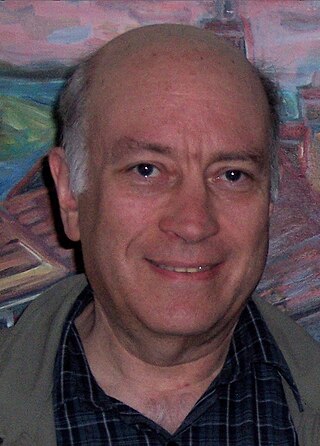
Brian Keith Harvey is a former Lecturer SOE of computer science at University of California, Berkeley. He and his students developed an educational programming language named UCBLogo which is free and open-source software, a dialect of the language Logo, as an interpreter, for learners. He now works on Snap!.

Snap! is a free block-based educational graphical programming language and online community. Snap allows students to explore, create, and remix interactive animations, games, stories, and more, while learning about mathematical and computational ideas. While inspired by Scratch, Snap! has many advanced features. The Snap! editor, and programs created in it, are web applications that run in the browser without requiring installation. It is built on top of Morphic.js, a Morphic GUI, written by Jens Mönig as 'middle layer' between Snap! itself and 'bare' JavaScript.

LibreLogo is an integrated development environment (IDE) for computer programming in the programming language Python, which works like the language Logo using interactive vector turtle graphics. Its final output is a vector graphics rendition within the LibreOffice suite. It can be used for education and desktop publishing.
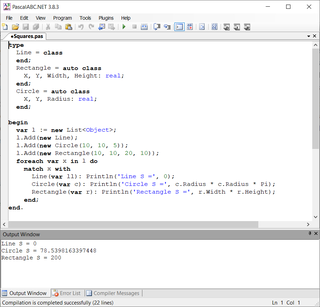
PascalABC.NET is a high-level general-purpose programming language supporting multiple paradigms. PascalABC.NET is based on Delphi's Object Pascal, but also has influences from C#, Python, Kotlin, and Haskell. It is distributed both as a command-line tool for Windows, Linux and MacOS (Mono), and with an integrated development environment for Windows and Linux, including interactive debugger, IntelliSense system, form designer, code templates and code auto-formatting.
BASIC 1.0 is the standard BASIC language for Thomson computers, which is the reference for the entire range. This is an implementation of Microsoft BASIC (BASIC-69). It was used to introduce children from France to programming in the 1980s. Three languages were mainly taught: LSE, BASIC and LOGO. School textbooks programs were given in BASIC 1.0 for Thomson and sometimes in ExelBasic for the Exelvision EXL 100.



